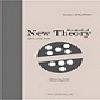Space Time Fractional Telegraph Equation and its Application by Using Adomian Decomposition Method
___
- [1] A. A. Kilbas, H. M. Srivastava & J. J. Trujillo, (2006), Theory and Applications of Fractional Differential Equations: Elsevier, Amsterdam, The Netherlands.
- [2] W. Tomasi, (2004), Electronic Communication Systems, Prentice Hall, New Jersey.
- [3] R. C. Cascaval, E. C. Eckstein, L. Frota & J. A. Goldstein , (2002), Fractional Telegraph Equations: J Math. Anal. Appl., 276, 145-159.
- [4] E. Orsingher & L. Beghin, (2004), Time Fractional Telegraph Equation and Telegraph Process with Brownian Time: Prob. Theory Relat. Fields, 128, 141-160.
- [5] J. Chen, F. Liu & V. Anh, (2008), Analytical Solution for the Time-Fractional Telegraph Equation by the method of Separating Variables: J. Math. Anal. Appl., 338, 1364-1377.
- [6] S. Momani, (2005), Analytic and Approximate solutions of the space and time fractional telegraph equations: Appl. Math. Comput., 170, 1126-1134.
- [7] G. Adomian, (1986), Non-linear Stochastic Operator Equations: Academic Press, San Diego.
- [8] G. Adomian, (1994), Solving Frontier Problems of Physics: The Decomposition Method: Kluwer Acad. Pub., Boston.
- [9] G. Adomian, (1988), A Review of the Decomposition Method in Applied Mathematics: J. Math. Anal. Appl. 135, 501-544.
- [10] A. M. Wazwaz, (2008), A Study on Linear and Nonlinear Schrodinger equations by the Variational Iteration method: Chaos, Solitons and Fractals 37, 1136-1142.
- [11] X. G. Luo, (2005), A two step Adomian decomposition method: Appl. Math Comput. 170(1), 570-583.
- [12] B. Q. Zhang, X. G. Luo and Q. B. Wu, (2006), The restrictions and improvement of the Adomian decomposition method: Appl. Math. Comput. 177, 99-104.
- [13] M. Caputo, (1969), Elasticita e Dissipazione: Zanichelli, Bologa, Italy.
- [14] H. Weyl, (1917), Vierteljahrsschr. d. Naturf. Ges.; Zurich, 62, 296–302.
- [15] E. A. Ibijola, B.J. Adegboyegun and O.Y. Halid, (2008), On Adomian decomposition method (ADM) for numerical solutions of ordinary differential equations: Advances in Natural and Applied Sciences, 3(3) 165-169.
- [16] A. Atangana, (2015), On the stability and convergence of the time-fractional variable order telegraph equation: Journal of Computational Physics 293, 104-114.
- [17] M. A. E. Herzallah, (2010), On abstract fractional telegraph equation: J. Comput. Nonlinear Dyn. 5, 5pp.
- [18] P. Zjaung, F. Liv, (2006), Implicit difference approximation for the time fractional diffusion equation: J. Appl. Math Comput., 22, 87-99.
- [19] M. Azreg-Ainov, (2009), A developed new algorithm for evaluating Adomian polynomials: CMES, 42(1) 1-18.
- [20] E. Babolian, A. R. Vahidi and G. H. Asadi Cordshooli, (2005), Solving differential equations by decomposition method: Applied Mathematics and Computation, 167, 1150-115
- Yayın Aralığı: 4
- Başlangıç: 2014
- Yayıncı: Naim Çağman
Nita SHAH, Moksha SATİA, Bijal YEOLEKAR
Phakawat MOSRİJAİ, Akarachai SATİRAD, Aiyared IAMPAN
Manzoor AHMAD, Altaf Ahmad BHAT, Renu JAİN
Arif Mehmood KHATTAK, Fahad JAMAL, Zaheer ANJUM, Younas KHAN, İshfaq AHMED
Aliya FAHMİ, Saleem ABDULLAH, Fazli AMİN
